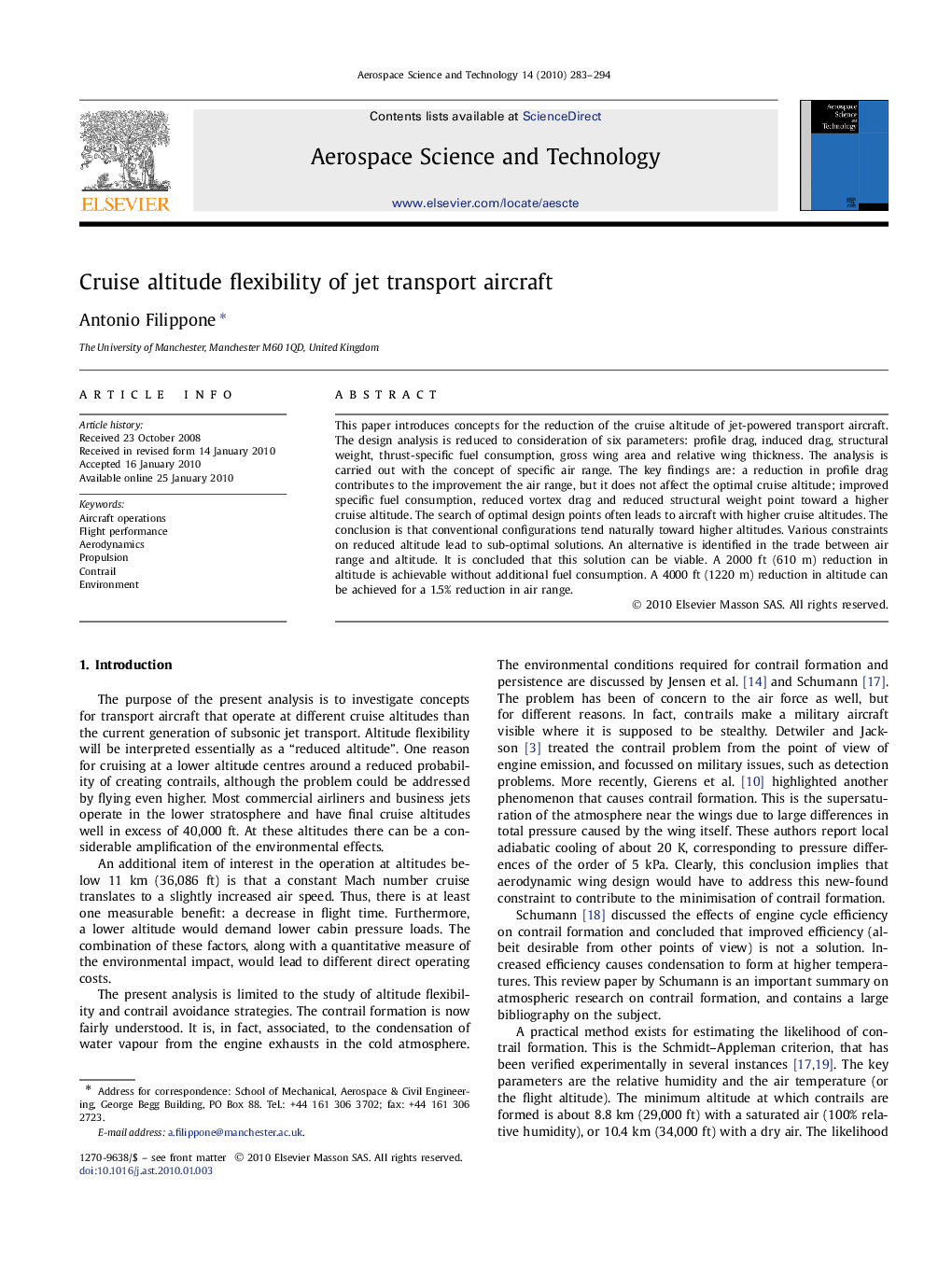| Article ID | Journal | Published Year | Pages | File Type |
|---|---|---|---|---|
| 1718652 | Aerospace Science and Technology | 2010 | 12 Pages |
This paper introduces concepts for the reduction of the cruise altitude of jet-powered transport aircraft. The design analysis is reduced to consideration of six parameters: profile drag, induced drag, structural weight, thrust-specific fuel consumption, gross wing area and relative wing thickness. The analysis is carried out with the concept of specific air range. The key findings are: a reduction in profile drag contributes to the improvement the air range, but it does not affect the optimal cruise altitude; improved specific fuel consumption, reduced vortex drag and reduced structural weight point toward a higher cruise altitude. The search of optimal design points often leads to aircraft with higher cruise altitudes. The conclusion is that conventional configurations tend naturally toward higher altitudes. Various constraints on reduced altitude lead to sub-optimal solutions. An alternative is identified in the trade between air range and altitude. It is concluded that this solution can be viable. A 2000 ft (610 m) reduction in altitude is achievable without additional fuel consumption. A 4000 ft (1220 m) reduction in altitude can be achieved for a 1.5% reduction in air range.
